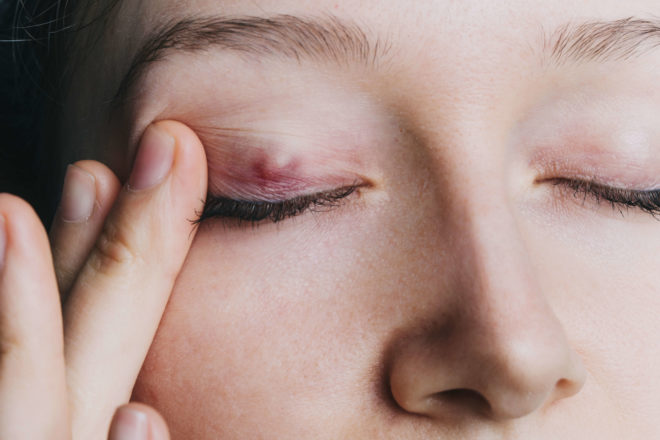
A chalazion is a fluid-filled bump on the eyelid, caused by a clogged oil gland (meibomian gland) inside the upper or lower eyelid, near the lash line. In a healthy eye, oils in the meibomian glands flow freely out of tiny openings. If the oil thickens, it begins to build up, causing a bump. The condition can start small but swell in size, leading to redness and tenderness (but not typically pain unless it becomes “clogged” and infected). If the chalazion becomes large enough, it can cause blurry vision or even interfere with your field of vision.
Diabetics and people with meibomian gland dysfunction, blepharitis or acne rosacea are at a greater risk of developing a chalazion and require treatment.
Dr. Valerie H. Chen, our board-certified ophthalmologist and ophthalmic plastic surgeon, can diagnose chalazion and offer both surgical and non-surgical treatments. Depending on the stage of the chalazion Dr. Chen will likely initially recommend non-surgical treatments like applying a warm compress to the area 4-5 times a day and gently massaging the area, which may help to open the clogged oil gland naturally. Antibiotics and/or steroid injections may be recommended. However, if these remedies are unsuccessful, Dr. Chen may determine chalazion removal surgery is necessary to drain the area. This is a quick in office procedure. Some studies suggest that leaving a chalazion untreated could lead to complications such as skin growths, infection, or eyelid disfigurement.
Dr. Chen will perform a comprehensive exam to diagnose the chalazion and rule out other eye problems. If she determines that the area is infected, she may recommend chalazion removal surgery to treat the area.
The procedure takes place in the Providence Eye office. You will receive local anesthesia to prepare you for the chalazion removal surgery. The procedure involves these steps:

A chalazion is not contagious, so there is no need to stay home from school or work while you have this condition. If you have any signs of infection (fever, pain, redness, swelling, body aches), contact your eye doctor right away.
Do not attempt to pop or squeeze the chalazion. This could lead to an eye infection.
Here are some general tips to promote a successful procedure:

You may experience some swelling and soreness in the treated area for several days after chalazion removal surgery. Always follow the instructions provided to you by Dr. Chen. If instructed, continue using antibiotic ointments and/or eye drops to prevent infection. Use ice for the first day to minimize swelling and then warm compresses on the treated area to continue drainage of oils from the affected gland. If antibiotics or steroid shots are prescribed, it’s important to be patient – these are not overnight solutions. In fact, it can take a few weeks or months for your condition to improve.
Dr. Chen and her team will provide you with detailed post-operative instructions in writing.
If you are experiencing the symptoms of a chalazion and want to determine the best course of treatment for chalazion removal, call 844-645-8206 or complete the short form below.